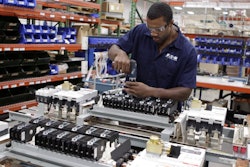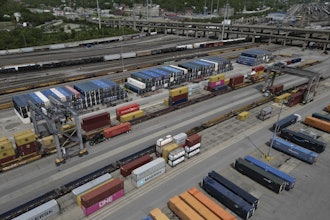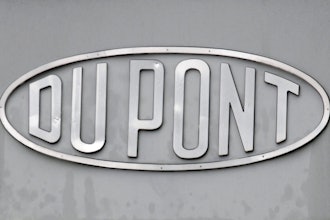The Beginners
Guide to ERP for
Food Processors
Technically, ERP stands for “Enterprise Resource Planning” software,
but really it could stand for “Everything Right & Profitable” or “Easier
Realized Profits”. Here’s a good definition we found floating around
the internet (we couldn’t find the source):
1Only an integrated
software system, such
as ERP, offers a single
version of accurate data
visible to all employees
Toll-Free: 1.866.788.1086
[email protected]
www.justfooderp.com
When Does a Food Company need
an ERP?
Of course it would be easy to say always. But ERP software isn’t really a necessary tool for
a company at every stage of its growth. In the early stages of executing and managing a
business, getting and keeping customers and delivering orders on time are the priorities
and take most of a young or small company’s resources. Transactions can be handled
manually and with a basic accounting system in place.
However, once the business starts or is planned to grow in size and/or complexity,
management starts needing to measure everything related to sales, purchasing,
inventory, production and quality. The various spreadsheets or disconnected ‘sidecar’
applications that the company has been making do with to manage data falls short of
accurate, timely metrics. Only an integrated software system, such as ERP, offers a single
version of accurate data visible to all employees, so that key performance indicators and
benchmarks can be set to measure performance.
With an ERP system in place, a business can move into the stages of
Measurement, Control and Improvement that are the signs of a mature,
thriving company. (See our maturity graph below.) Technology roll-outs
during these later stages could be called ERP+, wherein the software
extends its transactional reach into data management and analysis for
all movements, such as warehouse management, real-time production
KPIs, and business intelligence.
What Functionality Can An ERP Help My Food Processor With?
There are a lot of moving parts in a Food Processing Plant whether
you are focused on manufacturing or are doing both manufacturing and distribution. An
ERP software system, which has been built for the food industry, can handle all the vital
functionality required. It can do way more than this, but as this is a beginner’s guide, we
will focus on the basics:
Accounting
ERP software digitizes the following functionality, therefore dramatically reducing user
time and error:
Cost Accounting
• Gain greater visibility and insight into how your business is performing by monitoring
budgeted and actual operating costs, departments, products, and projects.
• Synchronize cost information with the general ledger and allocate costs to different cost
centers and objects.
• Spot budget variances as soon as they occur and take appropriate action.
2Toll-Free: 1.866.788.1086
[email protected]
www.justfooderp.com
Cash Flow Forecasting
• Understand your current cash position, forecast short-term cash flow, and monitor cash
receipts and disbursements.
• Create multiple cash flow forecasts for different time periods.
• Deliver role-appropriate cash flow information via tailored screens.
• Analyze cash flow and take action quickly.
Costing
• Ability to automatically allocate costs from production cost centers to work centers and
products for ingredients, direct labor, and overhead.
• Setup as many cost drivers as needed and link them with the supply chain.
• Allocate cost from work centers to products with a number of methods like quantity,
time, or weight.
• After the execution of the product costing, you can analyze the cost of products to their
cost components, which are defined according to your needs.
• Standard cost updates, item budgets, jobs management, resource management, and
more.
General Ledger
• Set up a company and post to the GL including setup of charts of accounts, general
journals, recurring journals, etc.
• Full data export to Word or Excel using style sheets and adding links to external
documents.
• Allocations, budgeting, account schedules, consolidations, responsibility centers and
financial reporting standards, change log, intercompany transactions, dimension, bank
reconciliation, and multi-currency support.
• Accounts Payables and Accounts Receivable are integrated with GL and Inventory.
• Track fixed assets such as buildings, machinery and equipment including acquisitions,
depreciation, write-downs, appreciation, etc.
Reporting
• Support for tactical and operational reporting.
• Customizable and detailed reporting in real-time via Excel reduces user’s learning curve
and removes the dependence on IT departments for report writing.
• Schedule reports for automatic distribution via email.
• Full Analytical and Business Intelligence capabilities through Excel or Web-based user
interface.
Sales& Marketing
• Sales order management processing and EDI.
• Pricing rules built into ERP.
• Sales commissions are highly configurable.
• Management of sales rebates and trade promotions.
• Sales forecasting for optimized inventory.
• CRM for full sales force automation; opportunity management; campaign management
and marketing lists.
3Toll-Free: 1.866.788.1086
[email protected]
www.justfooderp.com
Purchasing
• Order management and EDI.
• Vendor performance management.
• Purchase planning: MRP based on demand or re-order points.
• Automatic creation of purchase orders.
• Management of complex pricing by vendor, customer and item combinations.
Inventory
• Inventory visibility: track at location, zone, bin, container levels. Access this information
from anywhere in ERP system.
• Logistics: run planning, and shipment load consolidation.
• Shipping & Receiving: link paperwork electronically to receipt; receive by case, track by
pallet; quality audits on receipt.
• Warehouse management: receiving and warehouse putaway; picks and shipments,
physical counts and more - by hand or via mobile devices.
• Lot tracking and recall functionality.
Production/Shop Floor
• Production Scheduling: graphical interface; identify production steps, relate to machine/
work center; etc.
• Production Planning: Create/manage production orders, automatically calculate net
requirements.
• Break down finished goods into BOMs, then used to describe products sold together.
• Support for multi-plant production environments.
• Key performance metrics visualized in real time; tailored for each customer.
• Record consumption and output in a variety of ways, including integration to MES or
PLCs on shop floor, and barcode scanning integration in ERP.
• Work orders, MRO purchasing, fixed asset management, production scheduling fully
integrated in Preventative Maintenance.
4Toll-Free: 1.866.788.1086
[email protected]
www.justfooderp.com
What Are The Benefits Of ERP To You?
While ERP software is no small undertaking at a company, it does bring many benefits to
your business, just a few of which are:
• ERP boosts efficiency and reduces errors in all departments by automating data entry and
processes. Because most mistakes are made by people.
• ERP supports decision making by management since vital information about any part of the
company can be viewed immediately. This means real-time visibility!
• ERP improves data security, and keeps the company’s precious jewel - its knowledge -
from walking out the door when key personnel leave.
• ERP makes companies agile - more flexible and quicker to change to business demands -
and therefore more competitive.
• Faster and more accurate outputs ultimately lead to happier customers. And we find happy
customers lead to profits!
• ERP fosters collaboration of knowledge, within and between departments, as all employees
can create and share information easily and quickly.
5Toll-Free: 1.866.788.1086
[email protected]
www.justfooderp.com
So You Think You Are Ready For ERP?
Not all ERP software is created equal, so here are some points to help guide you in your selection
process. What you ask ERP vendors will help make everything go easier.
HINT: Software these days is pretty much apples to apples when compared. It’s the
implementation and the support that really will impact your business.
1. Which industry does the functionality within the ERP software best suit? If, for example,
Process Manufacturing - is the software built for the food industry specifically?
2. Does the vendor have up-to-date IT certification as validation of specialized knowledge in ERP?
3. What is involved in the upgrade process of the ERP software?
4. What is the long-term product road map of the software, i.e. what kind of R&D investment is
being made to the ERP?
5. Which customers may we speak to about the ERP and how it serves their companies? Are they
food companies that you consider having similar business strains?
6. Will you use our actual business data to do a software demonstration?
7. What does after-sales support of the ERP product involve? What you want to find out here is
does the love stop as soon as you pay the check.
SUMMARY
In an industry that has tight profit margins, fierce competition and strict
compliance requirements, having the right business management software is
critical to maintaining and growing market share and profitability. ERP software
is the right tool for food companies with the maturity and complexity to require
measurement, control, and continuous improvement of their operations. ERP
software that is built specifically for the food industry can lead to significance
cost savings and revenue enhancements.
The Beginners Guide to ERP for Food Processors
Only an integrated software system, such as ERP, offers a single version of accurate data visible to all employees, so that key performance indicators and benchmarks can be set to measure performance. Learn more. Download this white paper.
Latest in Home






















